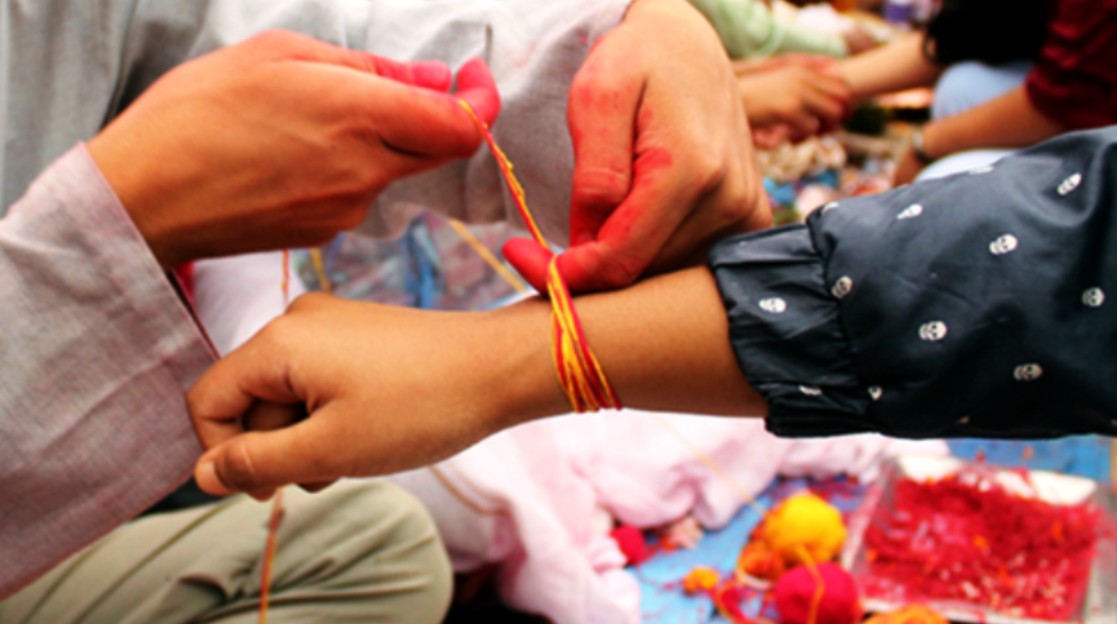

KATHMANDU: Nepal is rich in culture, a living mosaic where ancient traditions and diverse communities come together to create a heritage unlike anywhere else in the world.
Among its many vibrant festivals, Janai Purnima stands out as a day that binds faith, identity, and social connection. Observed on the full moon of the Hindu month of Shrawan, this festival is known across the country in different ways, as the sacred thread changing day for Brahmin and Chhetri men, as Raksha Bandhan in parts of the Terai, and as Kwati Punhi among the Newar community.
Each name carries its own history and rituals, yet all share a core message of renewal, protection, and togetherness.
For many Hindu men, Janai Purnima is the day to change the Janai, a sacred cotton thread worn across the chest. Made of three intertwined strands symbolizing control over speech, mind, and body, the Janai is not merely a ritual object but a constant reminder of discipline, integrity, and spiritual responsibility.
Priests conduct elaborate Vedic ceremonies at temples, riverbanks, and family shrines, sanctifying the new threads before placing them on the wearers.
Alongside this, a protective thread known as doro is tied around the wrists of both men and women, often by a priest or elder, accompanied by blessings for health, prosperity, and safety.
This doro is kept until Laxmi Puja, when it is respectfully removed and placed in a sacred location or released into flowing water.
While the thread changing ritual forms the heart of Janai Purnima for certain groups, the festival wears many faces across Nepal. In Newar households, the day is marked as Kwati Punhi, celebrated with a nourishing soup made from nine varieties of sprouted beans.
This seasonal dish, prepared with care days in advance, is believed to fortify the body during the humid and disease-prone monsoon months. In communities where Raksha Bandhan is observed, sisters tie a rakhi, a decorated thread, around their brothers’ wrists, strengthening the bond of love and protection between siblings.
In every version of the festival, the symbolism remains similar, protection from harm, renewal of relationships, and the strengthening of moral and social ties.
The reach of Janai Purnima extends beyond Nepal’s borders. Pilgrims from India, Bhutan, and other countries make their way to sacred sites such as Gosaikunda in Rasuwa, Kumbheshwar in Lalitpur, and the Pashupatinath temple in Kathmandu.
Many bathe in the icy waters of alpine lakes or in temple ponds, believing the act purifies the body and soul. The date, determined by the lunar calendar, typically falls in July or August at the peak of the monsoon, and the rains are embraced as part of the festival’s cleansing spirit.
Preparations for the day begin well ahead of time. Markets fill with Janai threads, colorful rakhi, fresh vegetables, beans for kwati, and offerings for the rituals. Families wake before dawn on the festival morning, bathing in rivers, ponds, or at home before heading to temples.
In rural areas, village priests or community elders oversee the ceremonies, while in urban centers large gatherings take place at major shrines.
Priests chant ancient mantras, sprinkle holy water, and tie the doro on the wrists of devotees, while Janai wearers receive their new sacred thread with solemnity.
In households observing Raksha Bandhan, sisters prepare ceremonial plates with rakhi, tika, rice, and sweets. After tying the thread and blessing their brothers, they are given gifts in return, sealing a promise of lifelong protection.
Meanwhile, in Newar kitchens, the long soaked beans are simmered with spices to make kwati, which is shared among family members and sometimes with neighbors, symbolizing generosity and community spirit.
Beyond the rituals and meals, Janai Purnima serves as a powerful social glue. It brings together families separated by distance, reconnects neighbors, and reinforces the authority of elders who lead the ceremonies. It is a reminder that cultural traditions are not static relics of the past but living practices that adapt with time.
In cities where busy schedules and apartment living can limit traditional gatherings, families have adjusted by holding smaller, more intimate ceremonies. Nepalis abroad keep the spirit alive by sending rakhi and doro by post or by meeting online to exchange blessings.
The festival’s significance goes beyond religion. It represents a shared cultural moment that cuts across caste, ethnicity, and geography, reinforcing Nepal’s identity as a land of unity in diversity.
While each community’s expression of Janai Purnima is different, the underlying themes of protection, renewal, and connection are the same. In this sense, the sacred thread is not just worn across the body, it symbolically runs across the entire country, binding people together in a common heritage.
Even as modernization changes lifestyles and traditions evolve, Janai Purnima remains a point of continuity. It links the younger generation with centuries old customs while allowing room for adaptation.
The sight of sacred threads drying in the sun, of families sharing steaming bowls of kwati, of sisters carefully tying rakhis on their brothers’ wrists, these moments affirm that Nepal’s cultural richness lies not in uniformity but in the harmonious coexistence of many traditions.
Janai Purnima is more than a festival. It is a reaffirmation of faith, family, and national identity. It is a day when rituals, prayers, and shared meals create an invisible but unbreakable connection between people, reminding them that in a rapidly changing world, some bonds, like the sacred thread, are meant to endure.